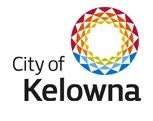City Of Kelowna
Kelowna and the Okanagan Valley really is one of the most beautiful places to live.
With a population of approximately 123,500, Kelowna is the largest city in British Columbia’s Okanagan Valley. Bordering Okanagan Lake, Kelowna is well known for its hot summers and temperate winters.
Kelowna is one of the most liveable cities in Canada. In the recent Canada Pulse survey, 90% of residents reported "My city is a great place to live."
CLICK ON THE LINK CITY OF KELOWNA
Quick Facts
- Kelowna is home to more than 122,000 people.
- The Central Okanagan Regional District has a population of 184,000.
- Kelowna encompasses 214 km2 of land and 48 km2 of water area
- Kelowna is 344 metres (1,129 feet) above sea level.
- Okanagan Lake is 110 km long.
- The average daytime high during July and August is 27.4 C.
- The average daytime high during December and January is -0.3 C. The average low is -7.7 C.
- Kelowna receives over 2,000 hours of sunshine annually and 28 cm of rain.
- Total annual precipitation is 366.4 mm. (280.7 mm. of rain and 105.5 cm. of snow).
- Serving over 1.5 million passengers and offering 66 daily non-stop flights to eight of the largest North American gateway airports, Kelowna International Airport YLW is the 10th busiest airport in Canada.
- The W.R. Bennett Bridge opened in May 2008, and has replaced the old Okanagan Lake Bridge (built in 1958) as the only vehicular crossing over Okanagan Lake. Named after former Premier William R. Bennett, the bridge is five lanes in width and almost 1063 meters in length. It remains the only floating bridge in Canada.
- Kelowna General Hospital is the largest and most comprehensive in the southern interior of B.C. with a full treatment cancer clinic.
- Kelowna is home to several local theatre groups, a symphony orchestra, museums and numerous art galleries.
- UBC Okanagan opened in September 2005.
- Okanagan College offers university and transfer programs, as well as a wide range of adult education and trades courses.


